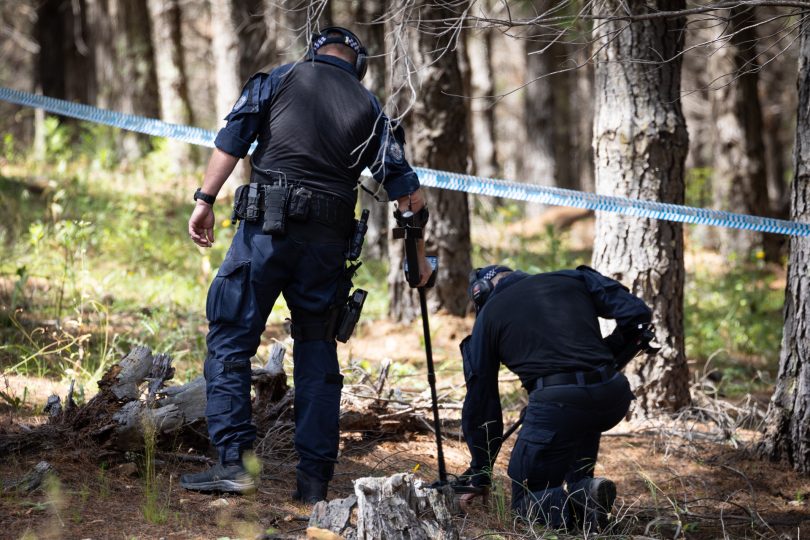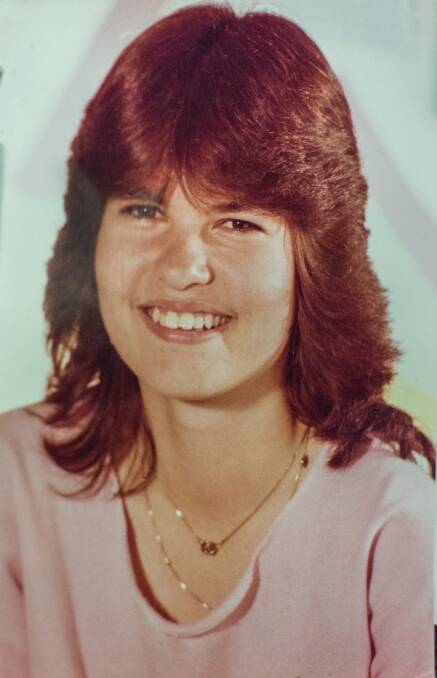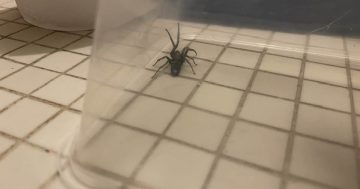
AFP officers searching the Fairbairn pine plantation for the Keren Rowland murder investigation. Photo: Michelle Kroll.
“Be careful when you’re around Woden Plaza at night.”
It’s the cautionary word his mother would always utter whenever Ben would head out after dark.
Megan Mulquiney was last seen outside the Woden Plaza at around 12:15 pm on Saturday, 28 July 1984. Aged 17, she had completed her shift at Big W and was due to catch a bus home, but never arrived.
A thorough police investigation followed, which turned up several persons of interest. But nothing further. Decades later, in 2011, a coroner ruled it “extremely likely that Megan met with foul play and was murdered by a person, or persons, unknown”.
The tale has haunted Ben (last name omitted by request).
A born and bred Canberran of 47 years, Ben holds a fascination for what has happened beneath the surface of what many see as a “dull, sterile kind of place” ever since he picked up a book on the bushranger Ned Kelly as a child.
“I was just intrigued and must have read that book every second day from cover to cover, and I think that’s when it all started for me.”
A full-time employee of the ACT public service by day, he’s founded a Facebook group to pull together the region’s internet sleuths to try to crack some of the city’s outstanding cold cases.
The Tragic Canberra group aims to “revisit some of the dark, intriguing and even macabre chapters in Canberra’s history in the hope that maybe someone, after all these years, is willing to talk or share some information”.

Canberra girl Megan Mulquiney has been missing since 1984. Photo: ACT Policing.
“I’ve got an archive on my computer of about 100 cases. I’ll post items with some level of tragedy associated, but it won’t always involve death. I’m conscious to include stuff that’s not always morbid.”
He also hopes to create his own true-crime podcast in the future.
One of Canberra’s most well-known cold cases is that of Keren Rowland.
The 20-year-old went missing on 26 February 1971, after she had planned to meet her sister at a party in Deakin. Her car, a white Mini Morris, was found abandoned on Parkes Way, and her remains, three months later, near the Air Disaster Memorial near Queanbeyan.
Police searched the site again in December 2020, looking for a silver or gold-coloured chain that secured the nameplate, to no avail.

The chain remains unfound. Photo: Michelle Kroll.
Ben says most of his research is dug up through the National Library of Australia’s digital archive Trove, so most events are post-1995.
One example was when a Ford Cortina was pulled from the water at Lotus Bay near the Canberra Yacht Club during a police training exercise on 20 November 1989. Still strapped in the driver’s seat was a 25-year-old woman’s body.
Police identified her as Irene Catherine Angley, a hairdresser who had gone missing from her Spence home 14 years earlier. But how she had ended up in the lake and stayed there for over a decade remains a mystery.
“People drive past these spots every day without having any idea about some of the stuff that’s happened there.”
He says Lake Burley Griffin, in particular, while only 60 years old, is “shrouded in mystery and intrigue”.
In another case, in August 1975, near Dairy Flat Road, two families were out water-skiing together when the kids complained of being cold. They were bundled into the car when one of them – playing near the controls – let the handbrake off. The car rolled into the lake, and the parents could not save any of the children in time.
“I guess that’s another aim of what I’m trying to do here – people need to be reminded of the dangers out there and what can happen,” Ben says.

What secrets are hiding beneath the surface? Photo: Michelle Kroll.
Ultimately, his investigations are about honouring the memory of the victims and providing closure to the family.
“I think people avoid talking about the deceased because of our discomfort with it. But relatives of the deceased don’t want their loved ones to be forgotten. They want them portrayed as someone who was living, who had a personality and human side, rather than just a victim.”
He voices the need to be “tasteful and respectful” in the group “because there might be living relatives reading your comments”.
Original Article published by James Coleman on Riotact.




